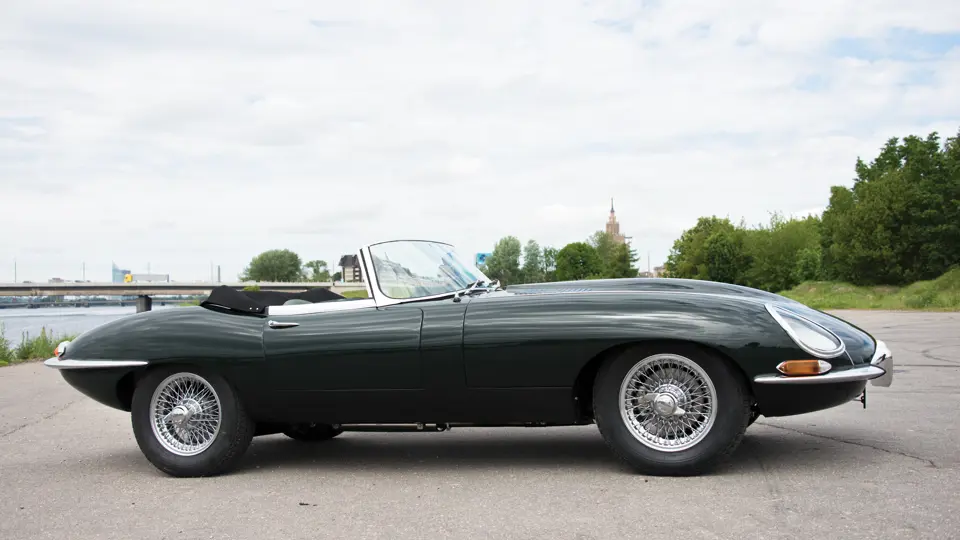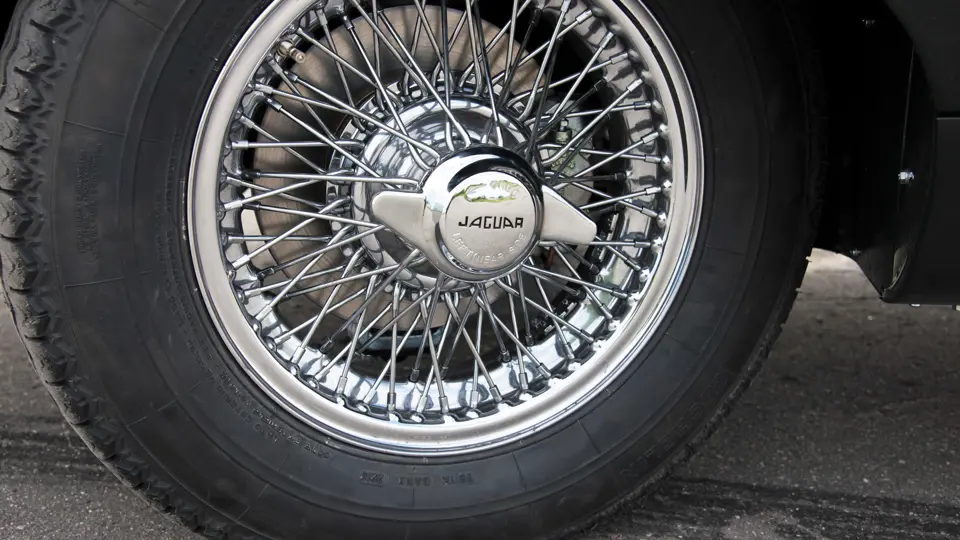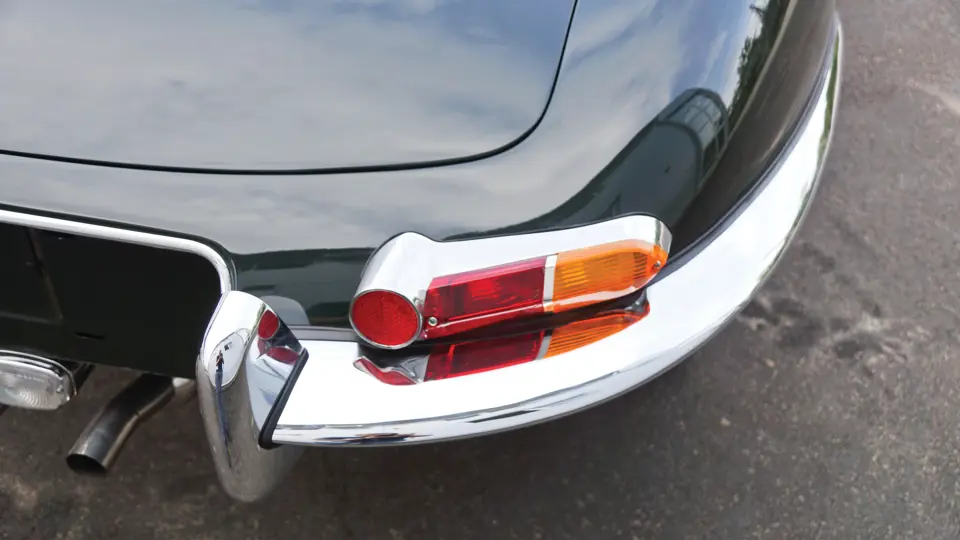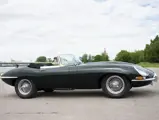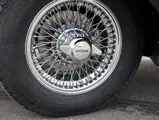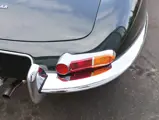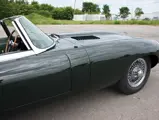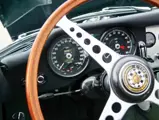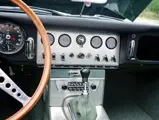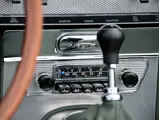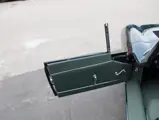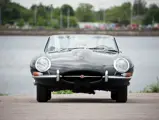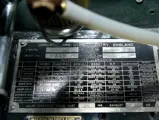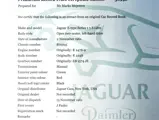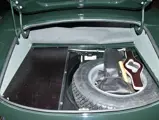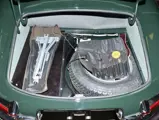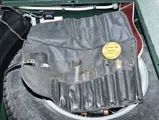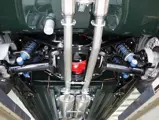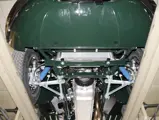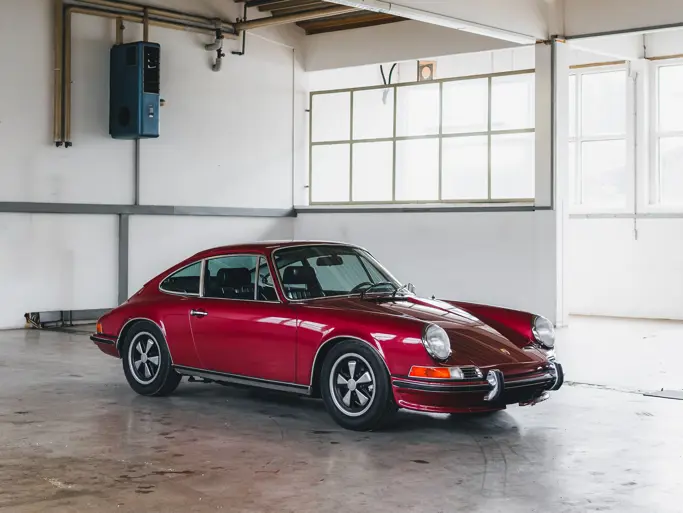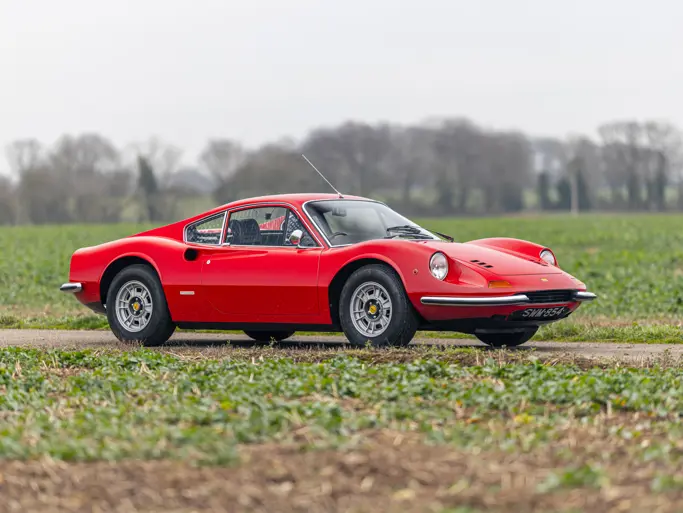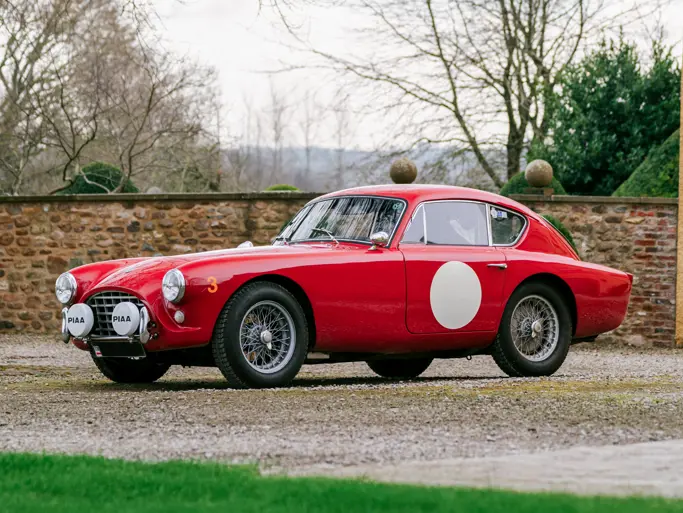265 hp, 3,781 cc DOHC inline six-cylinder engine, four-speed manual transmission, independent front suspension with semi-trailing wishbones, torsion bars, telescopic shock absorbers, an anti-roll bar, independent rear suspension with lower transverse tubular links, radius rods, universally jointed half-shafts, twin coil springs, and telescopic shock absorbers, and four-wheel Dunlop disc brakes. Wheelbase: 96 in.
Whether one referred to it as an E-Type or an XKE depended upon which side of the Atlantic you hailed from, the latter for those in the United States. Regardless, this was, most assuredly, the sexiest car of the 1960s. It followed the Jaguar formula—sensational looks, sensational performance, and a sensationally low price—that had been introduced so successfully with the XK120 in 1949 and restated with vigor in 1961. It was time. The XKE made Jaguar young and exciting once again. Replacing the voluptuousness of the former car was the sleekness of the new one. What remained, however, was the undeniable sex appeal of the Jaguar formula.
The E-Type was preceded by the competition D-Type of the mid-1950s and its short-lived production version, the XKSS of 1957, as well as the experimental competition car entered by Briggs Cunningham at Le Mans in 1960. Like the D-Type, the new car used monocoque construction: the front of the chassis featured a space-frame with steel tubes supporting the engine, the front suspension, and the hinged hood and fender assembly, which lifted to provide virtually unlimited engine access. It also featured the proven twin-cam inline six-cylinder engine of the former 150S, four-wheel independent suspension, and disc brakes at each corner. Speed of 150 mph was promised too, all for a price of about $6,000—and for one of the best-looking cars on the planet!
This particular E-Type is an early production car built on November 13, 1961, as confirmed by its Jaguar Daimler Heritage Trust Certificate, a copy of which is included. The car was comprehensively restored to high standards, including every major system and aspect of the automobile, resulting in what is described as an exceptional vehicle. An obsessive list of work performed and details of the restoration are available for inspection. Subtle upgrades, including a Pertronix electronic ignition and performance coil, a CoolCat six-blade fan, and a modern fuel pump, have been incorporated to enhance the usability and performance of the car without significantly detracting from the authentic appearance of its presentation. Included with the sale are the jack, tool kit, and significant documentation supporting the work performed.
Exterior trim has been re-chromed. The Dayton chrome wheels with stainless-steel spokes are fitted with new Firestone 185-15 whitewall tires with the proper aspect ratios, giving the car an evocative period appearance and correct stance. The top and boot are also fresh, and the interior was restored to the same high standards as the exterior, with fresh leather and carpets. The engine compartment is highly detailed and the trunk is trimmed in tan upholstery, as was done from new.
This is an exceptional example of what is, arguably, one of the most beautiful cars ever designed.

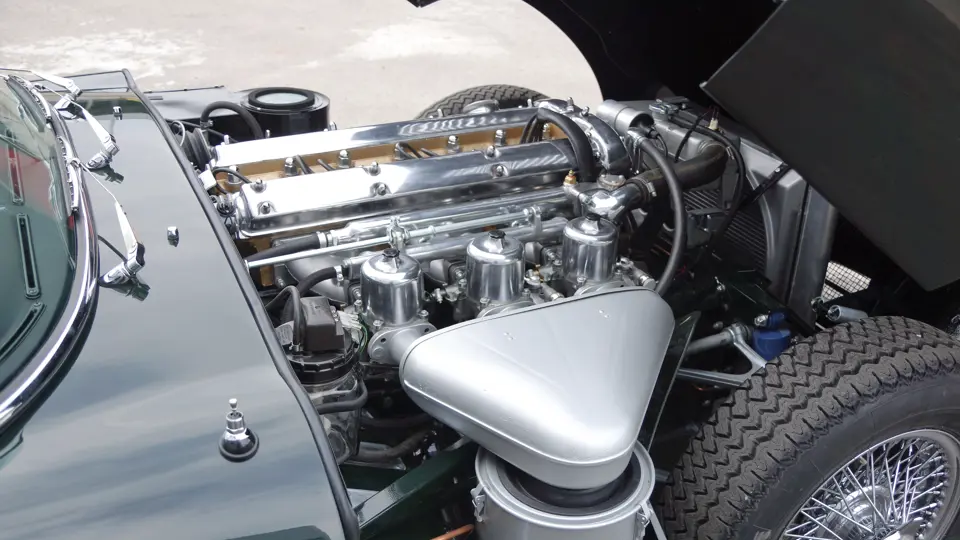



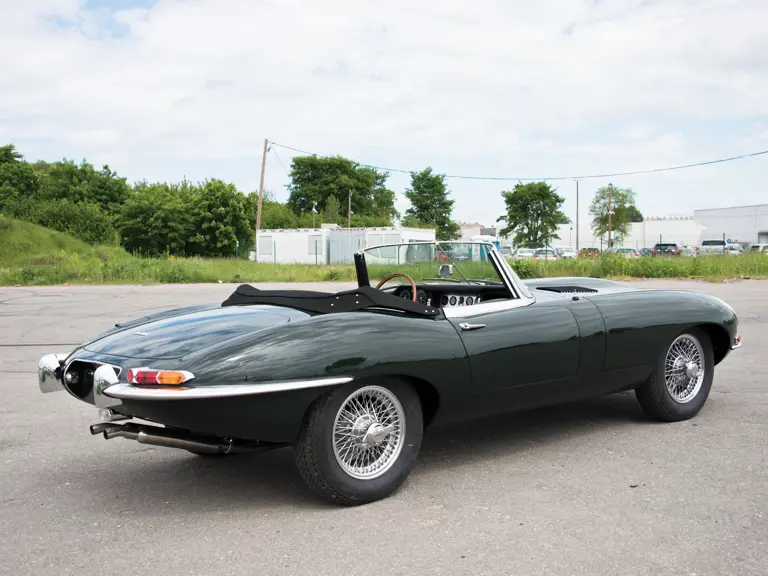
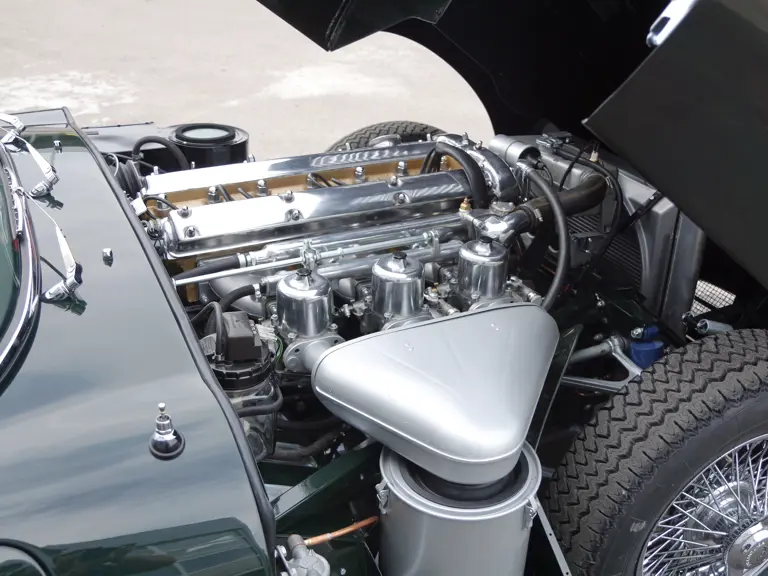
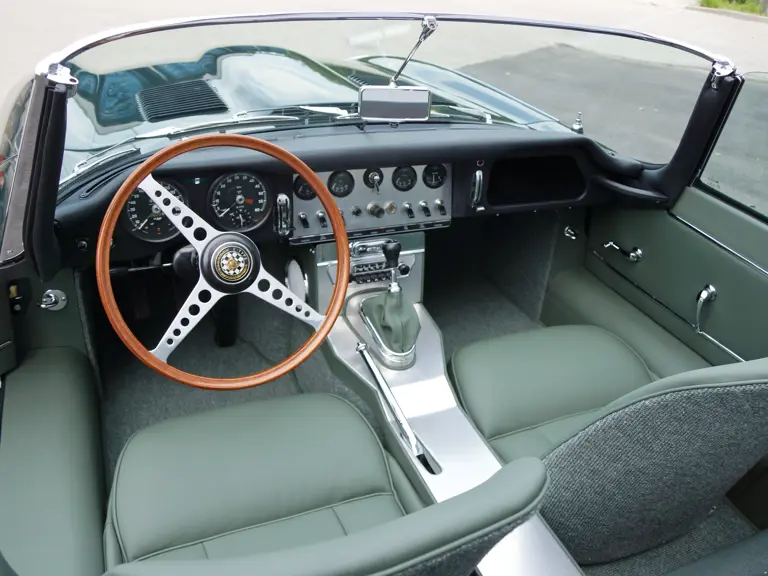
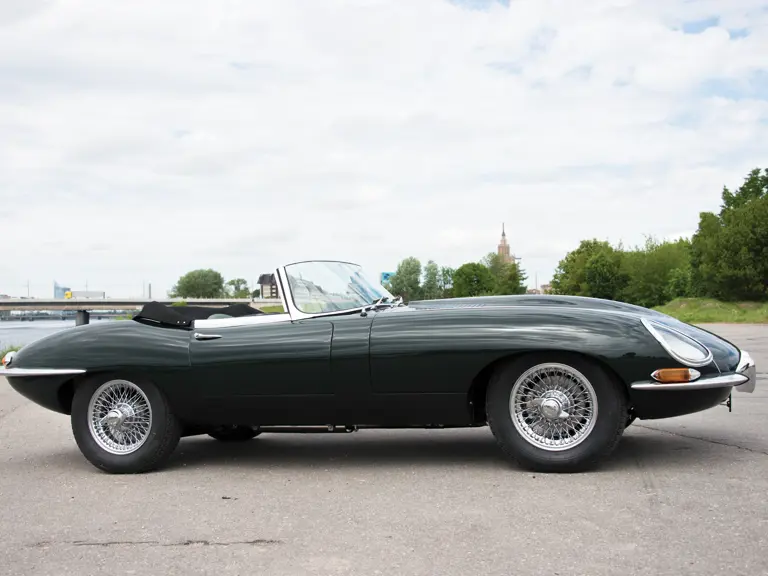
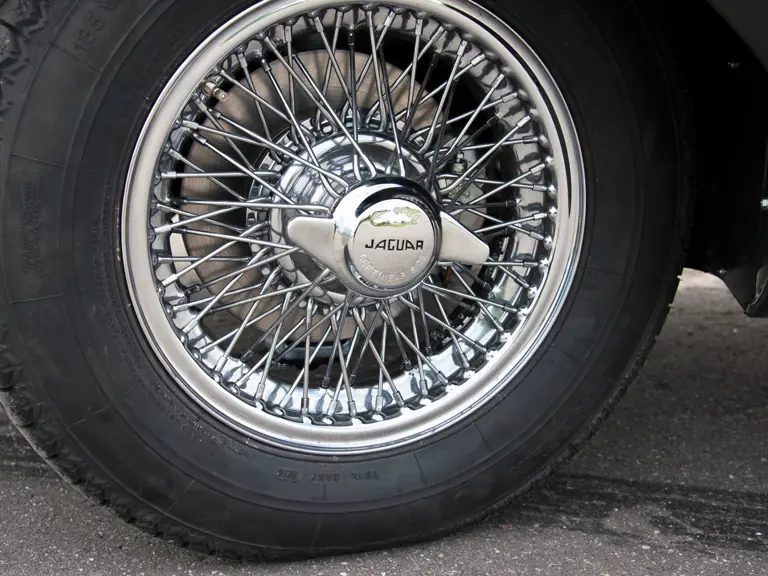

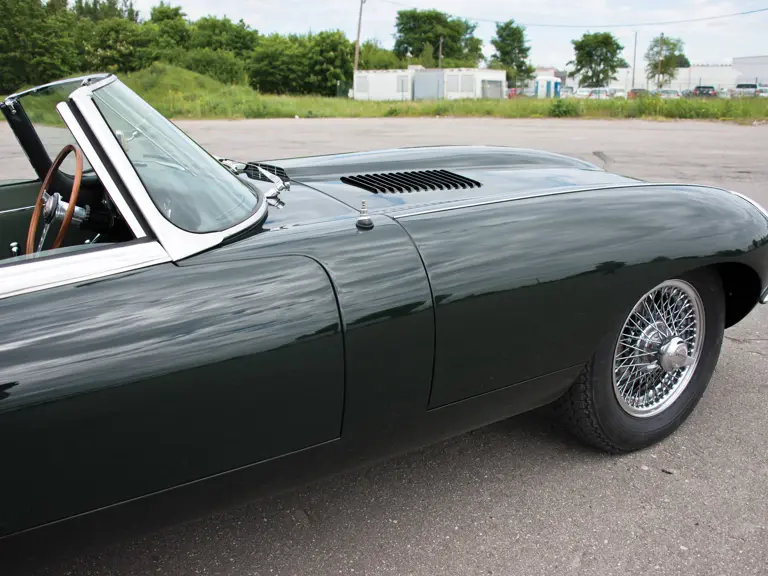
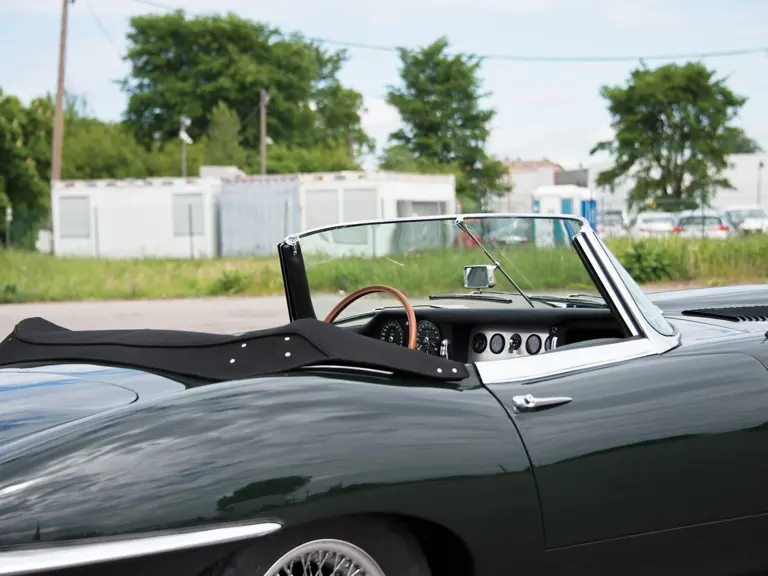
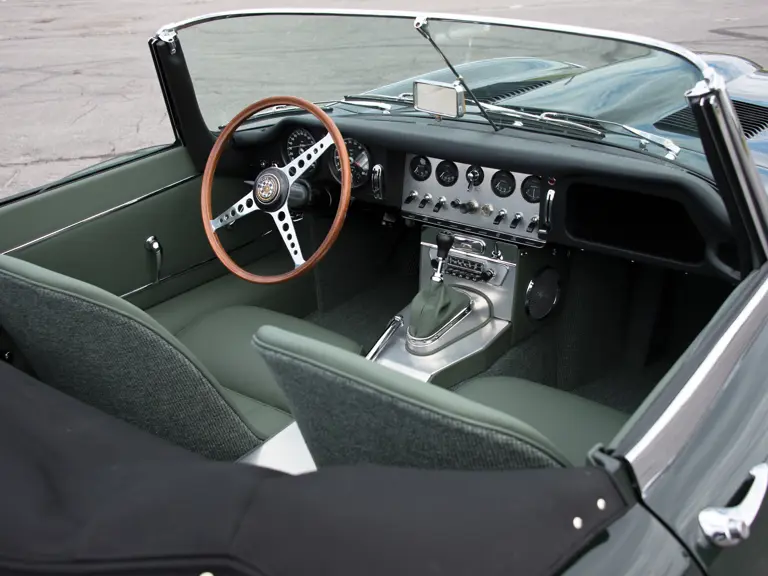


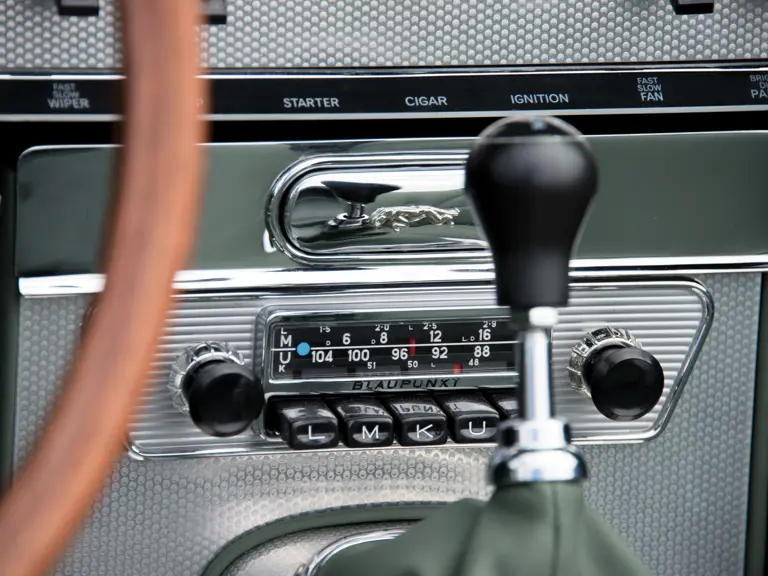
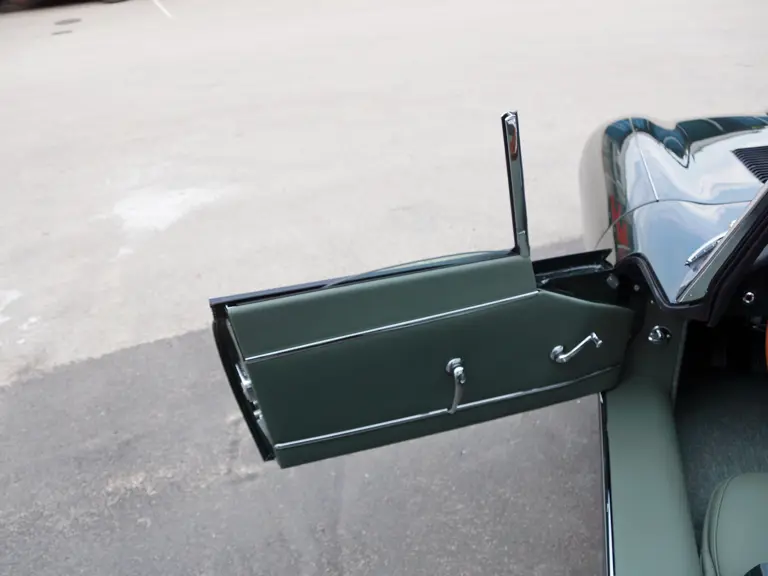
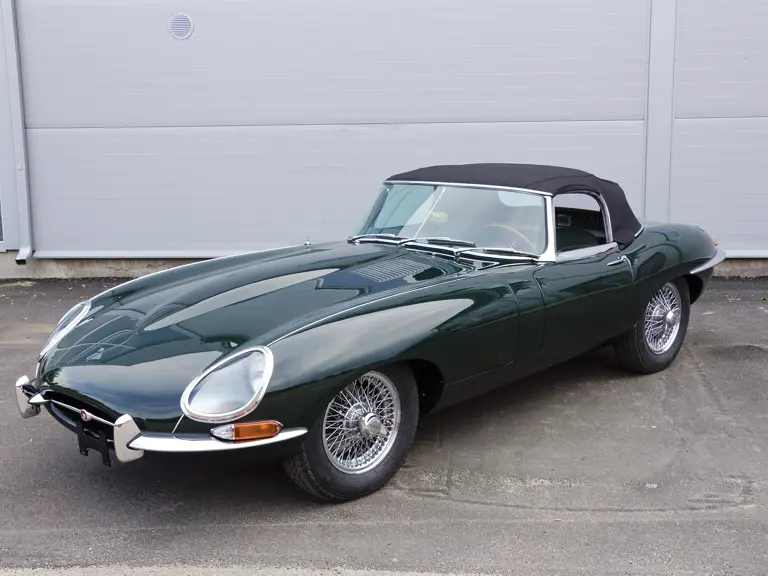

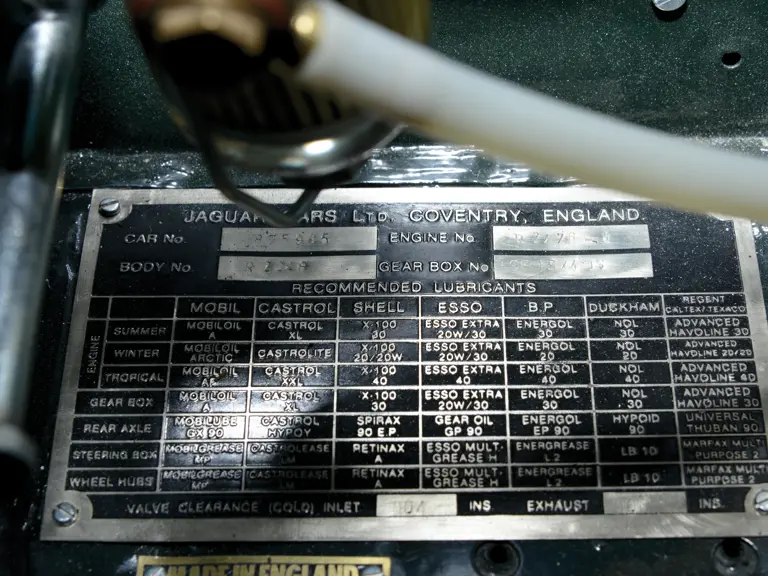
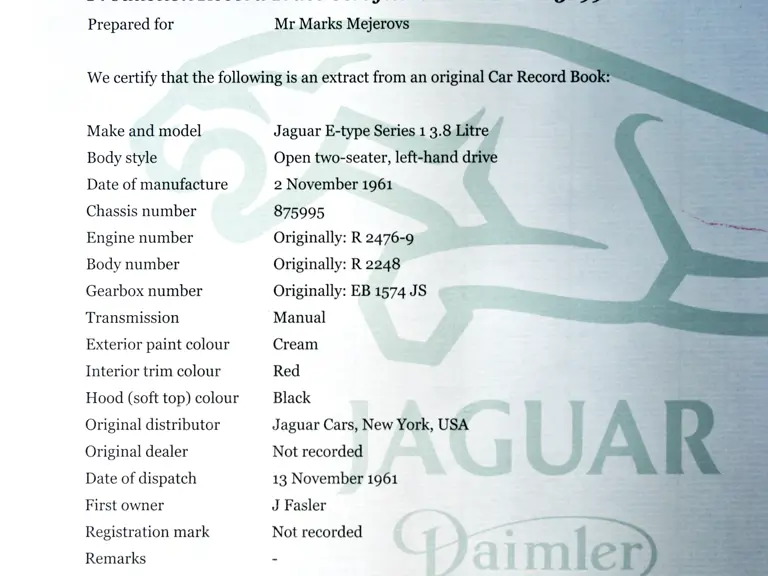
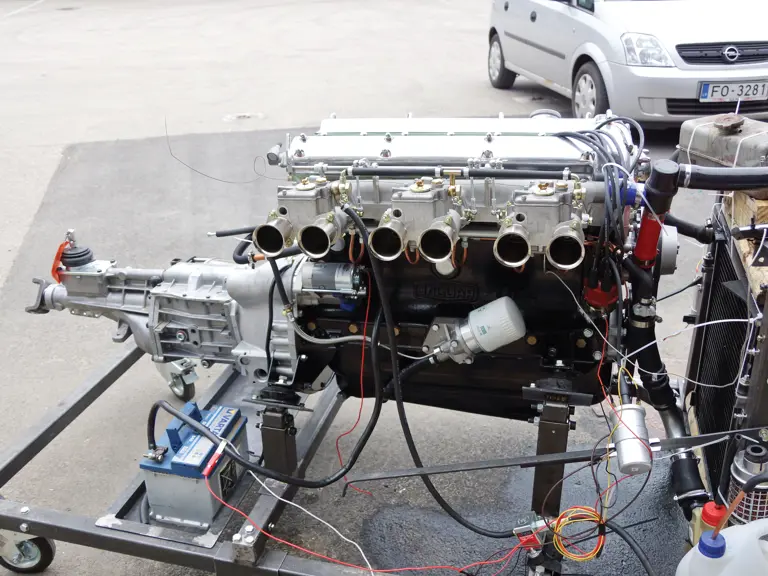
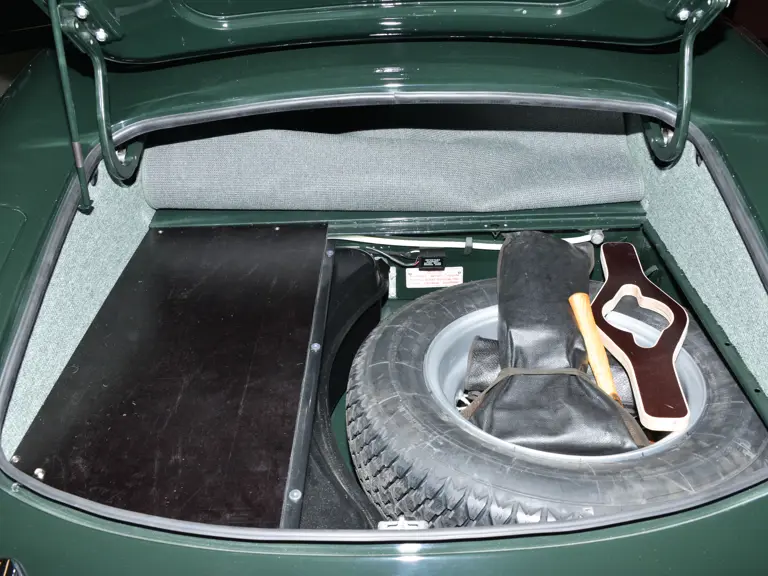
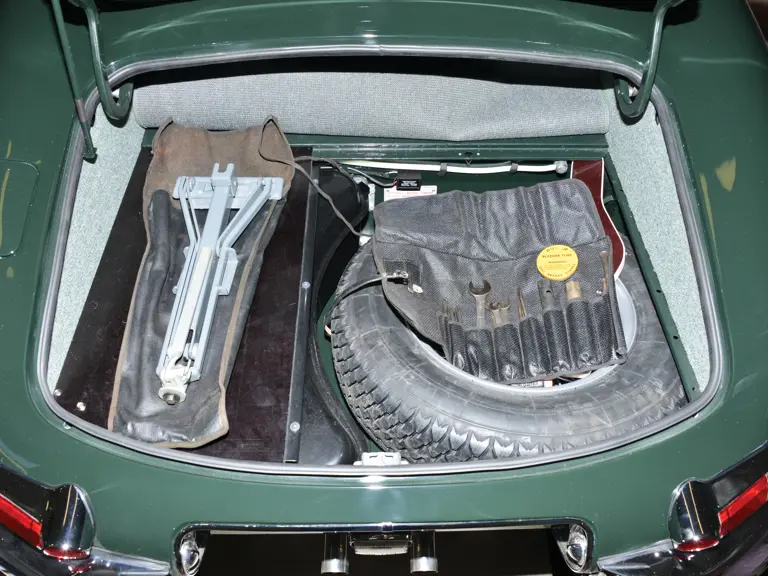
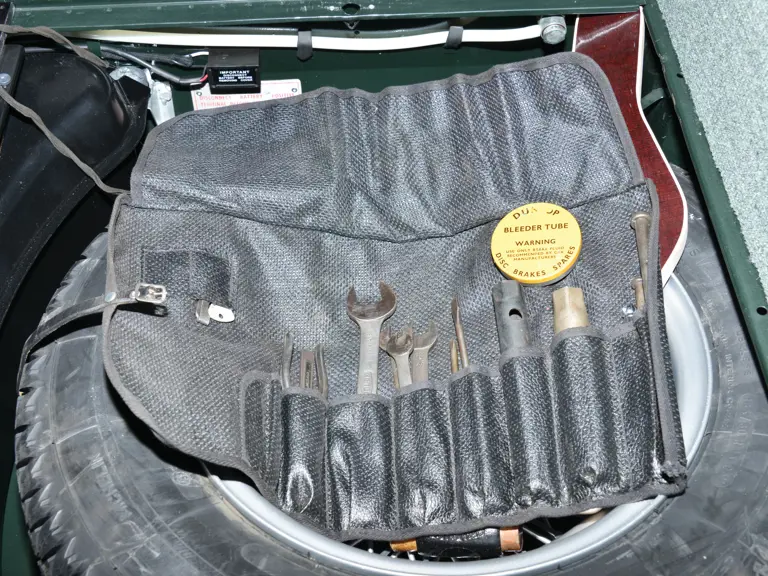
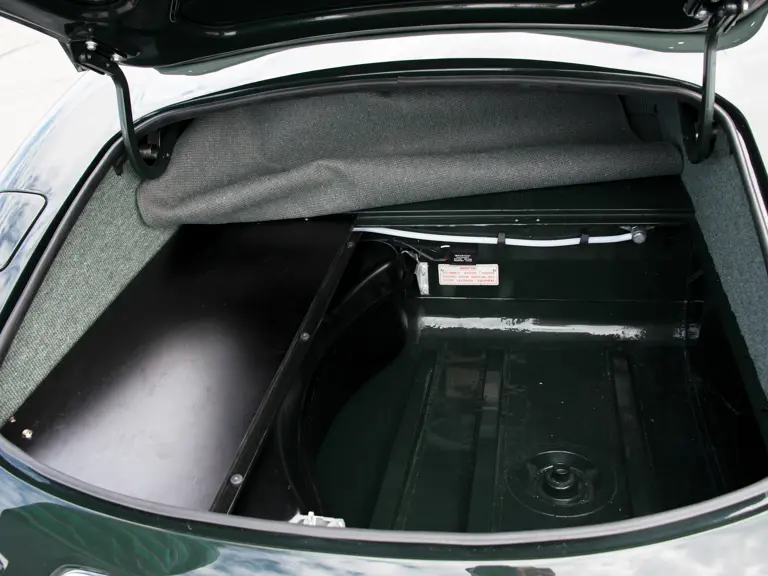
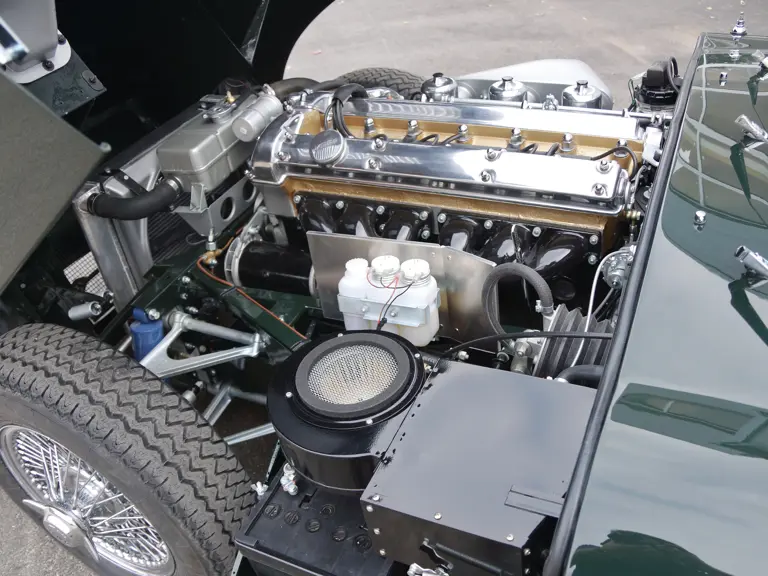
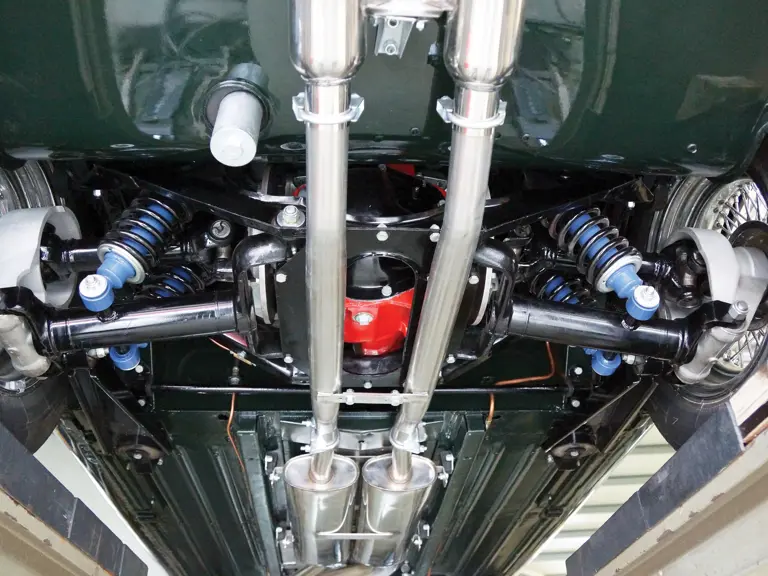
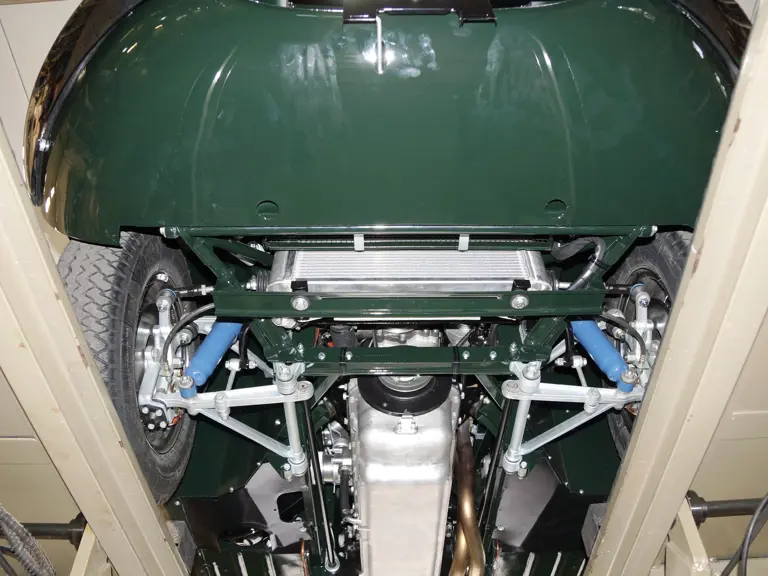
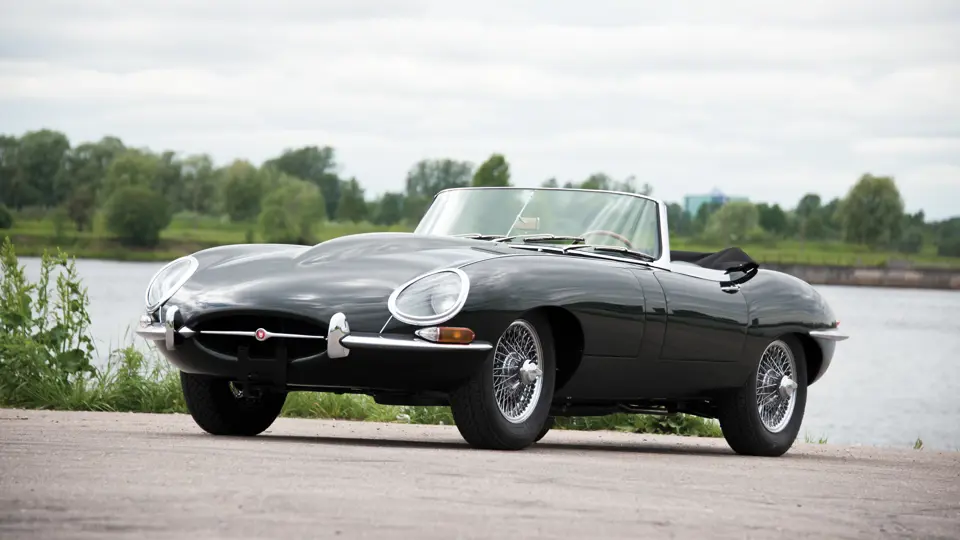
 | Monterey, California
| Monterey, California
